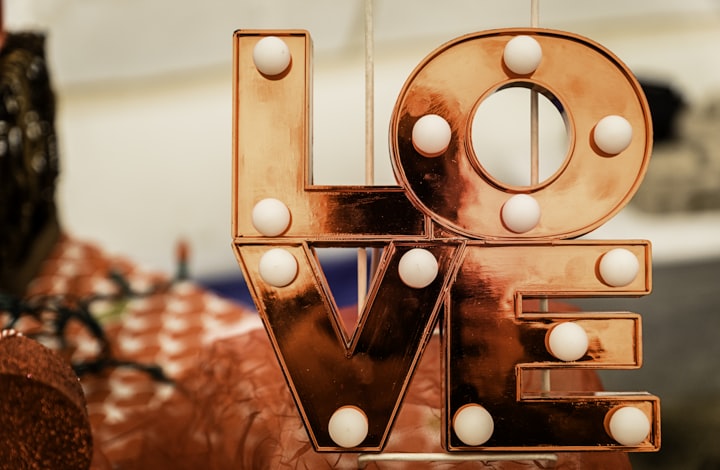
Some Facts about Valentine’s Day:
- Lupercalia, a Roman fertility festival that involved feasting and the pairing of young women with men through a lottery, is often considered the precursor to Valentine’s Day.
- The Catholic Church recognizes at least three different saints named Valentine, all of whom were martyred, contributing to the multiple legends surrounding St. Valentine.
- The romantic connotations of Valentine’s Day didn’t emerge until the Middle Ages. It was Geoffrey Chaucer who first linked St. Valentine’s Day with romance in his work, “Parliament of Foules”.
- The Duke of Orleans, Charles, sent the earliest known valentine in 1415 while imprisoned in the Tower of London. Sadly, his wife died before the letter could reach her.
- The phrase “wearing your heart on your sleeve” may have originated from a Middle Ages tradition where men would draw the names of women who they would be coupled with for the upcoming year, wearing these names on their sleeves.
- Esther Howland, a young graduate, started a successful Valentine’s Day card business in the 19th century, revolutionized the American greeting card industry.
- The Victorians popularized the trend of giving flowers on Valentine’s Day, viewing them as a symbol of affection.
- Valentine’s Day is the busiest day of the year for florists, with millions of flower arrangements being delivered across the globe.
- While Valentine’s Day originated as a feast day for St. Valentine, it has largely lost its religious connotations and is now primarily a secular celebration of love.
- The tradition of signing a valentine with an “X” comes from the Middle Ages. People who couldn’t write their names signed with an “X”, which represented a kiss.
- An estimated 145 million Valentine’s Day cards are exchanged annually, making it the second-largest holiday for giving greeting cards.
- Pet love is also celebrated on Valentine’s Day, with about 25% of pet owners giving gifts to their pets.
- Oliver Chase, the inventor of candy hearts, originally started his career by producing medicinal lozenges before moving into confectionery.
- Valentine’s Day is a sweet holiday, with consumers purchasing over 58 million pounds of chocolate and candy.
- The character Juliet from Shakespeare’s “Romeo and Juliet” receives thousands of letters every year from people sharing their stories of love and heartbreak.
Some Facts about April Fool’s Day:

1. April Fool’s Day is observed worldwide, in different cultures. People see it as a day for laughter and light-hearted deception. Its exact origins remain a mystery, but various theories abound. One theory links it to the switch from the Julian calendar to the Gregorian calendar in 1582. Those unaware of the change became the hell of jokes and hoaxes, earning the moniker “April fools.”
2. Historians connect April Fools’ Day to ancient Roman festivals like Hilaria, where people donned disguises and mocked others.
3. April Fool’s Day, known as “Poisson d’Avril” in France, involves placing paper fish on unsuspecting people’s backs.
4. The term “April fool” originated in the 17th century to describe someone who fell for pranks on April 1st.
5. The earliest recorded April Fool’s Day prank occurred in 1698 when a London newspaper claimed the moon was visible from Earth. People were fooled by this humorous story.
6. In Scotland, April Fool’s Day extends to two days: April 1st and 2nd. The second day, known as Taily Day, involves pranks related to people’s tails.
7. In Iran, April Fool’s Day aligns with the 13th day of the Persian New Year.
8. In India, Holi (the festival of colors) coincides with April 1st. Pranks and laughter accompany the colorful celebrations.
9. The tradition gained popularity in the United States during the 18th century. Americans have embraced the playful spirit ever since.
10. Charles Schulz’s comic strip “Peanuts” featured a mischievous character named April Fool. His pranks entertained readers worldwide.
11. The English town of Gotham claims to be the birthplace of April Fool’s Day. Legend has it that townspeople fooled King John, earning toll exemption.
12. The celebration may also stem from the Egyptian legend of Isis, Osiris, and Seth.
13. Some speculate that April Fool’s Day relates to the vernal equinox.
14. The Tower of London once alarmed people by claiming it was leaning. A clever April Fool’s Day hoax!
15. In 1957, the BBC reported a record spaghetti crop in Switzerland. Viewers watched footage of noodles supposedly harvested from trees.
16. Despite centuries of celebration, the true origins of April Fool’s Day remain elusive. Its mystery adds to the day’s enduring charm.
17. Only four times since 1900 has Easter coincided with April Fool’s Day: in 1923, 1934, 1945, and 1956. That is not going to happen until 2029.
Some Facts about Eid ul-Fitr:

- Eid ul-Fitr celebrates the end of the month-long fast known as Ramadan. Muslims fast from sunrise to sunset during Ramadan to commemorate the month in which the Quran was revealed to Holy Prophet Mohammed (PBUH).
- The word “Eid ul-Fitr” means “Festival of Breaking the Fast” or “Feast of Fast-Breaking.”
- Eid ul-Fitr begins when the new moon is first visible. Traditionally, it begins when the smallest sliver of a waxing crescent moon appears.
- The Islamic calendar is based on lunar cycles, hence Ramadan and Eid ul-Fitr fall on different Gregorian dates each year. Lunar months are shorter than Gregorian months.
- The exact day of Eid ul-Fitr may fluctuate due to variations in moon sighting methodology. Some communities rely on local sightings, whilst others use astronomical calculations.
- Eid ul-Fitr typically lasts three days, however festivities might last longer depending on the calendar. If the three days fall in the middle of the week, the celebrations may extend into the weekend.
- On Eid morning, Muslims cleanse their bodies with a rite known as “ghusl.” They then put on newly stitched clothes. Females decorate their hands with henna and wear bangles.
- The common Eid greeting is “Eid Mubarak,” which means “Have a blessed Eid!”
- After dressing up, Muslims assemble for a special Eid prayer called “Salat ul-Eid,” which is prayed in congregation. It is divided into two sections (rakats) and takes place either outside or in enormous prayer halls. It is a moment for group worship and introspection.
- Eid ul-Fitr is a time to feast! The first breakfast after fasting consists of sweets and dates. On the first day, after morning prayers, families gather for lunch and share a large feast.
- Sweets play an important role in Eid celebrations. Traditional desserts such as sheer khurma, mithai, halwa, baklava, maamoul are frequently eaten and distributed on eid day.
- Exchanging presents is popular throughout Eid. It represents love, friendship, and benevolence. Children receive “Eidi” (gift money) from elders.
- Giving to charity (known as zakat ul-fitr or fitrana) is an important aspect of Eid ul-Fitr. It assures that everyone enjoy the celebrations, regardless of their financial status.
- While Ramadan emphasizes fasting and charity, Eid ul-Fitr broadens the attitude of generosity. Muslims continue to commit acts of love and charity.
- Eid ul-Fitr is a celebration of joy, thanks, and unity among Muslims around the world.
Eid Mubarak to everyone celebrating. May this Eid bring happiness, blessings, and peace to your life (Amen) 🌙🌟
- Thanks for Reading!
- 👏 Please leave a heart for the story.
- 🌐 Share the story on Social Media.
- Disclaimer: The story has already been published on other platforms.
About the Creator
Ha Le Sa
Lost my old account with all the earnings and subscribers. Kindly support me by reading and sharing my stories.
🌟 Support my work with a Small Donation.






Comments
There are no comments for this story
Be the first to respond and start the conversation.